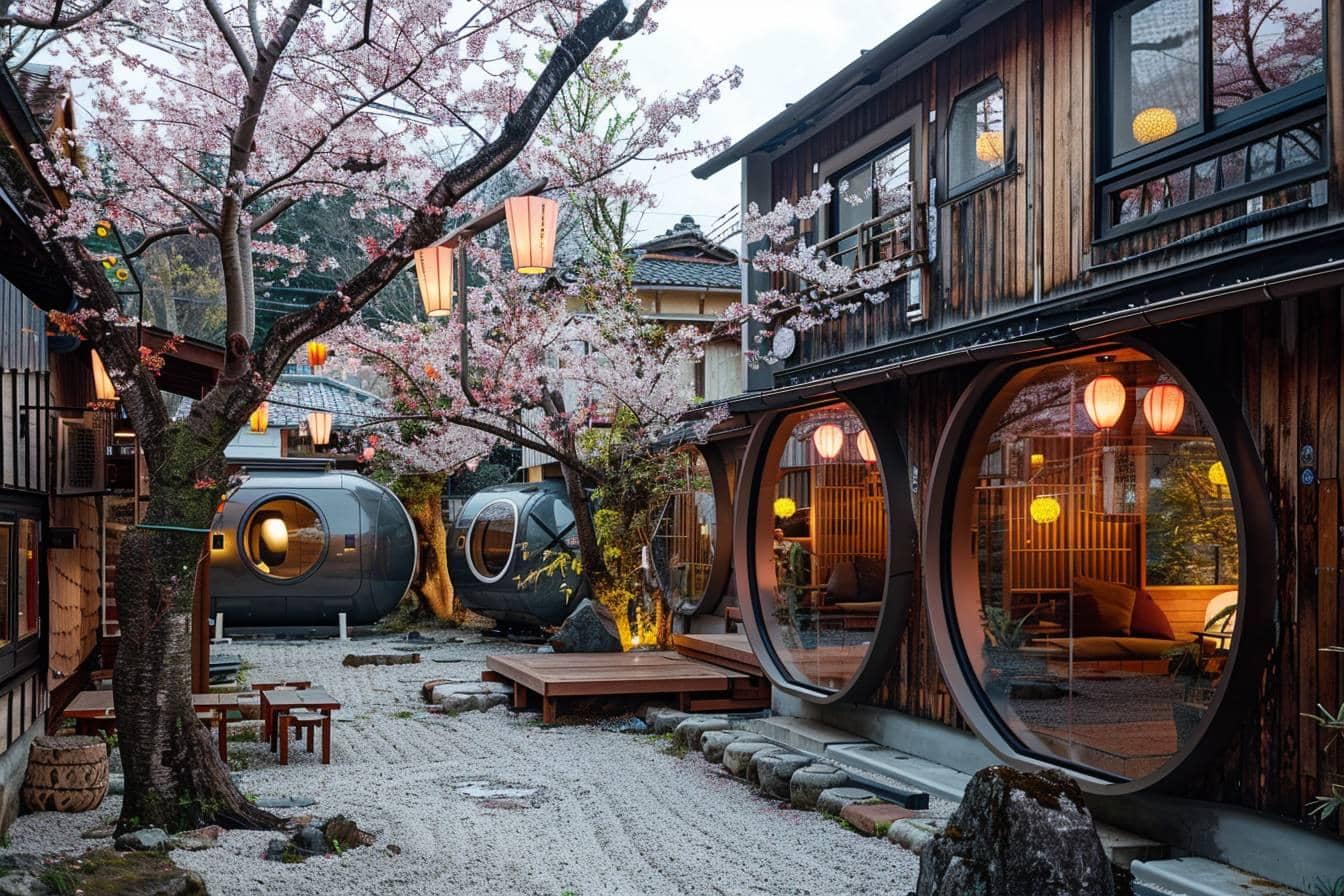Traveling in Japan can be an eye-opening experience, especially when you dive into the mesmerizing world of affordable accommodations. From the neon-lit streets of Tokyo to the serene landscapes of Kyoto, Japan offers a variety of stay options that won’t break the bank but will undoubtedly enrich your journey.
I remember my first solo trip to Japan; navigating these choices was like opening a treasure chest of cultural experiences. Let me share some insights and personal encounters that could help you find the perfect place to rest your head without exhausting your budget.
In this article
- A guide to daily costs in japan
- Opt for hikes and walking tours
- Stay in unique Japanese accommodations
- Savor the local flavors on a budget
- Unlock the value of transportation passes
A guide to daily costs in japan
Before diving into the specifics, it’s crucial to understand the overall daily costs you might encounter while exploring Japan. This knowledge helped me budget better and enjoy my travels without constant financial worries. Accommodations, transportation, food, and sightseeing add up, but there are ways to make every Yen count.
Based on my experience and research, the average daily budget for a frugal traveler in Japan could range from ¥7,000 to ¥10,000 (roughly $63 to $90). This includes staying in budget accommodations like guesthouses or hostels, using public transportation wisely, enjoying affordable local cuisine, and experiencing free and paid attractions.
| Category | Average Cost |
|---|---|
| Accommodation | ¥2,500 – ¥5,000 |
| Transportation | ¥1,000 – ¥2,000 |
| Food | ¥2,500 – ¥3,000 |
| Attractions | ¥1,000 – ¥2,000 |
| Miscellaneous | ¥500 – ¥1,000 |
Remember, these are estimates to give you a ballpark figure. Your actual expenses can vary based on your choices and preferences.
Opt for hikes and walking tours
One of the aspects I deeply cherish about Japan is its balance between ultramodern cities and untouched natural beauty. Hiking and walking tours provide breathtaking views and prove an economical way to explore the country.
From strolling through the historical streets of Kyoto to conquering the trails of Mount Takao, walking let me experience Japan’s diverse landscapes at my own pace. The striking contrast between the serene, verdant trails and the bustling cityscapes is something I’ll never forget.
Walking tours in historic districts reveal the hidden gems of Japan’s cities. These excursions often come at no or minimal cost and offer a deep dive into the country’s rich history and culture. Interacting with locals and fellow travelers added an excellent layer to my adventure.

Stay in unique Japanese accommodations
Japan offers some of the most unique accommodation options I’ve ever encountered, blending traditional culture with modern convenience. Here are a few authentic experiences that won’t strain your budget :
- Capsule hotels in major cities: My night in a capsule hotel was a glimpse into the future. Nestled in my cozy pod, I marveled at the combination of efficiency and privacy. It’s perfect for solo travelers seeking a unique and budget-friendly experience.
- Guesthouses in historic districts: Staying in a traditional Japanese guesthouse, or ryokan, in places like Gion in Kyoto transported me back in time. The hospitality and warmth I experienced there, complete with tatami mats and sliding doors, enriched my journey deeply.
- Monastery stays (Shukubo): I stayed overnight at a Buddhist temple in Koyasan, offering me a serene retreat. Participating in the morning prayers and eating vegetarian meals prepared by the monks was a profoundly humbling experience.
These stays offer a bed for the night and immerse you in the Japanese way of life, providing memories far beyond the trip.
Savor the local flavors on a budget
The culinary adventure in Japan is vast and varied, with options to satisfy any palate without denting your wallet. Each meal was a discovery, from standing sushi bars in Tokyo to street food stalls in Osaka.
Bentō boxes: These pre-packed meals are a feast for the senses and a boon for the budget traveler. I enjoyed many picnics in parks and temple grounds with just a bentō and a view.
Convenience store treasures: Japanese convenience stores, or konbini, surprised me with their tasty, affordable meals. From onigiri to ready-made salads, they were a constant in my daily diet, reminding me that good food doesn’t have to cost a fortune.
Eating like a local helped keep my expenses low and led me to some of Japan’s most authentic food experiences. In a tiny, family-run noodle shop in Kyoto, I found the heartwarming comfort of a simple bowl of ramen, proving that sometimes, the simplest meals are the most memorable.
Unlock the value of transportation passes
Navigating Japan’s famed transportation system was a breeze with the proper passes. The Japan Rail Pass was my golden ticket, offering unlimited access to most JR trains nationwide, including some bullet trains. It simplified travel and encouraged spur-of-the-moment detours to destinations I hadn’t planned on visiting.
Local transportation passes within cities like Tokyo and Kyoto also saved me a significant amount on buses and subways. Whether hopping on a train to visit the next town or using a city bus to reach a secluded temple, having a pass made each journey hassle-free and cost-effective.
Tips for maximizing transportation passes :
- Plan your itinerary to make the most of the pass’s validity period.
- Consider regional passes if you’re focusing on a specific area of Japan.
- Always check if your destination is covered by the pass to avoid unexpected costs.
As a digital nomad and avid explorer, I find Japan’s transportation’s precision and reliability technically fascinating and convenient. The integrated system supports the adventurous spirit and is cost-effective, proving that managing travel expenses in Japan is less about cutting corners and more about making wise choices.




